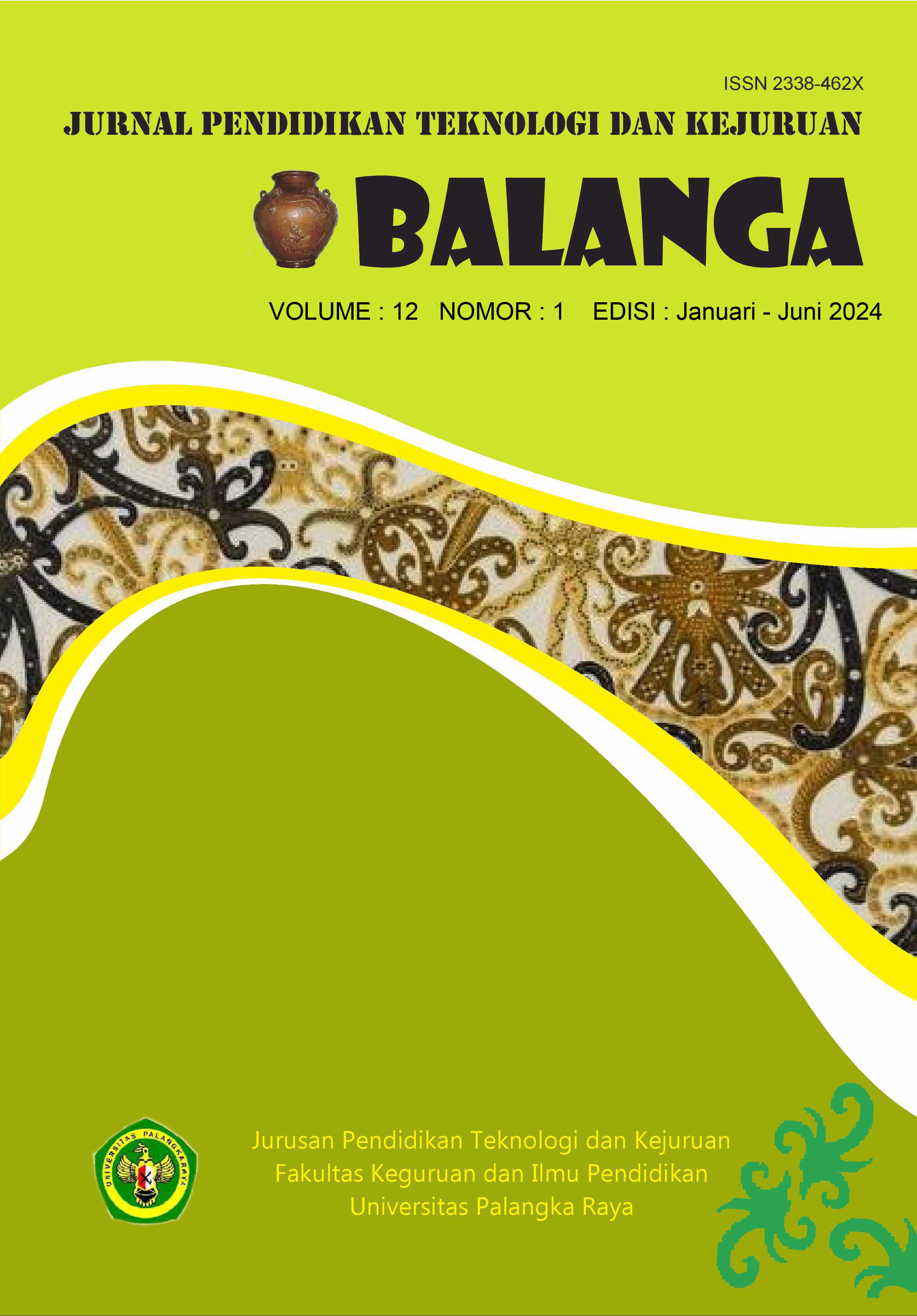STUDY OF BRIDGE PILLAR SHAPES ON THE POTENTIAL OF LOCAL SCOUR IN EXPERIMENTAL LEARNING FOR BUILDING ENGINEERING EDUCATION STUDENTS
DOI:
https://doi.org/10.37304/balanga.v12i1.15828Keywords:
pillar shape, discharge variations, local scourAbstract
One of the elective courses in the Building Engineering Education Study Program, FKIP, Palangka Raya University is Bridge Structure. Experimental study is a way of teaching and learning that involves student activity by experiencing and proving for themselves the process and results of experiments which are closely related to everyday life. On the subject of bridge structures, it is necessary to carry out experimental studies on bridge pillars. Pillars are part of the bridge's lower structure. The existence of pillars in river flows causes changes in river flow patterns. Changes in flow patterns will result in local scouring around the pillars. This research aims to determine the effect of pillar shape on the potential for local scour that occurs around the pillar. This research was carried out under steady uniform flow conditions with three discharge variations. The physical models of pillars used are rectangular pillars, cylindrical pillars and triangular pillars. The type of research used is experimental research. The research location was carried out at the Building Engineering Education Laboratory, FKIP UPR with glass channel media with dimensions of 200 cm long, 15 cm wide and 20 cm high. In the test with flow discharge Q1= 40.08 cm3/sec, the maximum scour in the middle of the pillar that occurred was (ds)= 0.2 cm and the average at the edge was (ds)= 0.3 cm for pillars with the shape rectangular, while for triangular and cylindrical pillars experiencing sedimentation, Q2= 100.20 cm3/sec. The maximum scour at the center of the pillar that occurs is (ds)= 1.3 cm and the average at the edges is (ds) = 1.4 cm for rectangular pillars, while for triangular and cylindrical pillars experiencing sedimentation, Q3= 107.04 cm3/sec. The maximum scour in the center of the pillar that occurs is (ds)= 1.5 cm and is flat -average at the edge is (ds)= 1.5 cm for pillars with a rectangular shape, while for pillars with a rectangular shape and cylinders experience sedimentation. The results obtained from this series of research are that the greater the discharge flowing in a channel cross-section, the deeper the local scour around the pillars will be and the best shape in this study is a cylindrical shape because it has the potential for the smallest scour depth.
Downloads
Downloads
Published
Issue
Section
License
Copyright (c) 2024 BALANGA: Jurnal Pendidikan Teknologi dan Kejuruan

This work is licensed under a Creative Commons Attribution 4.0 International License.






























